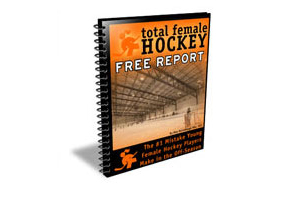How Early Is Too Early?
How early is too early for a young player to specialize in hockey? In a sport that requires so much overall athleticism in addition to specific skills that aren’t replicated in any other sports, parents, coaches and players are often torn about when they should focusing solely on the sport they love. Many recent books and articles have highlighted the “10,000 Hour Rule” which states that in order to become a master of your craft (in this case, hockey) you must accumulate at least 10,000 hours of deliberate practice time. Now 10,000 hours is a lot of time especially when you consider that most hockey players are only on the ice for an average of 7 hours a week. So how would a young player looking to make it to the highest levels of hockey be able to accumulate enough hours to reach the top of their sport?
Here’s how those 10,000 hours might breakdown (assuming that a player is training all year around): If you spent 10 hours per week training for 50 weeks of the year, you would collect 500 hours of training time per year. At that rate, it would take you 20 years to reach the “mastery” level. Considering many young hockey players don’t start playing until they are 7 or 8, that might just be too little, too late.
Or is it?
An interesting study out of Scandinavia has emerged studying this theory and it might just have big implications on the way that we train and develop young hockey players who aspire to reach the elite levels of their sport. The researchers asked elite athletes and near elite athletes to answer questions about their experiences in the amount of training they did over the course of their career.
Interestingly enough, the near-elite athletes actually did more hours of training than the elite athletes prior to the age of 15. But by the age of 18, the elite athletes caught up and had accumulated the same amount of training hours as the near-elite athletes. This means that between the ages of 15 and 18, the elite athletes did significantly more training than their near-elite counterparts. Those elite athletes then continued to do significantly more training that the near-elite athletes between the ages of 18-21.
What this research seems to be showing is that athletes do in fact have to accumulate a large amount of training hours to get to “elite” status. But it also suggests that it might not be as critical for that training to be accumulated earlier in their career. It seems to suggest that accumulating as many as hours of training as possible between the ages of 15-18 might in fact be the key to making the jump from near-elite to elite status.
I’ve watched this first-hand for the past 4 years with the girls hockey players I work with at the PEAC School For Elite Athletes in Toronto. While our grade 7 and 8 players benefit greatly from getting an extra 4 on-ice skills sessions a week skating with older, faster, more experienced players, it’s our high school aged players who really excel with all the extra time they are spending honing their craft on the ice and in the gym. While their teammates on their clubs teams have had probably 50 practices and 50 games by this point in the season, our PEAC players have had an additional 70 hours of on-ice skill training and another 40 hours of off-ice training in the gym. Over the course of the entire school year, our PEAC players will have had over 120 extra hours on the ice and 80 extra hours training off the ice. As we can see from the study above, all those extra hours during the critical period of age 15 to 18 can make THE difference in an athlete’s ability to go from near-elite to elite.
So if by the age of 15, you want to focus on hockey and progress to the elite level, you must commit yourself to doing significantly more training on and off the ice than your teammates and friends to catapult yourself from near-elite to elite status.
Your friend and coach,
Kim
Kim McCullough, MSc, YCS
Director, Total Female Hockey

